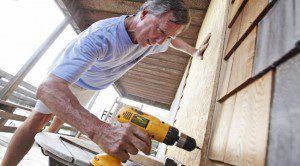At the direction of President Barack Obama, the Federal Emergency Management Agency (FEMA) is coordinating the federal government’s support and preparations to support states potentially affected by Hurricane Sandy.
Today, the President was briefed by Homeland Security Secretary Janet Napolitano, FEMA Administrator Craig Fugate, National Hurricane Center Director Dr. Rick Knabb, and Homeland Security Advisor John Brennan on Hurricane Sandy and ongoing federal actions to prepare for the storm as it continues to move toward the United States mainland. The President has directed Administrator Fugate to ensure that federal partners continue to bring all available resources to bear to support state and local responders in potentially affected areas along the Eastern seaboard as they prepare for severe weather.
In advance of any potential impacts of the storm, and in coordination with the states, FEMA proactively deployed liaison officers to emergency operation centers in the District of Columbia, Maine, Maryland, Massachusetts, New Jersey, New York, Pennsylvania, Rhode Island and Virginia to help coordinate if additional support is needed. In addition, and at the request of the states, FEMA deployed Incident Management Assistance Teams to states along the East Coast including Connecticut, Delaware, Maryland, Massachusetts, New Hampshire, New Jersey, New York, North Carolina, Pennsylvania, Rhode Island, Vermont and Virginia to assist state and local partners as they prepare for the severe weather.
“This is a large storm that is forecasted to impact the Mid-Atlantic and other parts of the East Coast with strong winds, coastal flooding, inland flooding, rain and snow,” said FEMA Administrator Craig Fugate. “People should be ready for the possibility of power outages paired with cold temperatures. Now is the time to prepare – review your emergency plans, check your supplies and stay informed.”
According to the NOAA National Weather Service 2 p.m. advisory, tropical storm warnings and watches remain in effect for portions of the coastal areas in the Carolinas. In addition, gale, storm and high wind watches and warnings are in effect for some areas.
Now is the time to prepare your family, home or business to lessen the impact of severe weather. Coastal and inland residents should ensure that their families have an emergency plan and emergency kits in their homes and cars. Some of the items in a basic emergency kit include: one gallon of water per person per day, for drinking and sanitation; at least a three-day supply of non-perishable food; battery-powered radio and a NOAA Weather Radio; flashlight and extra batteries; and First Aid kit. Those in areas where the storm is expected to produce snow should also have supplies in their emergency kits such as rock salt or environmentally safe products to melt ice on walkways, snow shovels, adequate clothing and blankets to keep warm and heating fuel like dry, seasoned wood for the fireplace or wood-burning stove. Both hurricanes and winter storms often cause power outages, take steps now to ensure you can sustain yourself for at least 72 hours if needed.
Everyone should familiarize themselves with the terms that are used to identify a severe weather hazard. A Tropical Storm Warning means that tropical storm conditions are expected within 36 hours. A Tropical Storm Watch means that tropical storm conditions are possible within 48 hours. A Winter Storm Warning means that hazardous winter weather conditions are expected within 24 hours. A Winter Storm Watch means that hazardous winter weather conditions are possible within 48 hours. The potential for heavy rains can also lead to flooding, or flash flooding in some areas. Driving through a flooded area can be extremely hazardous. Remember – turn around, don’t drown.
More information about what to do before, during and after a disaster can also be found visiting ready.gov and listo.gov. The FEMA mobile site (http://m.fema.gov), smartphone app (http://www.fema.gov/smartphone-app), and text messages (http://www.fema.gov/text-messages) also provide regular updates. Sharing information using social media tools is also a good way for residents to stay informed. Follow FEMA online at http://blog.fema.gov, www.twitter.com/fema, www.facebook.com/fema, and www.youtube.com/fema.



